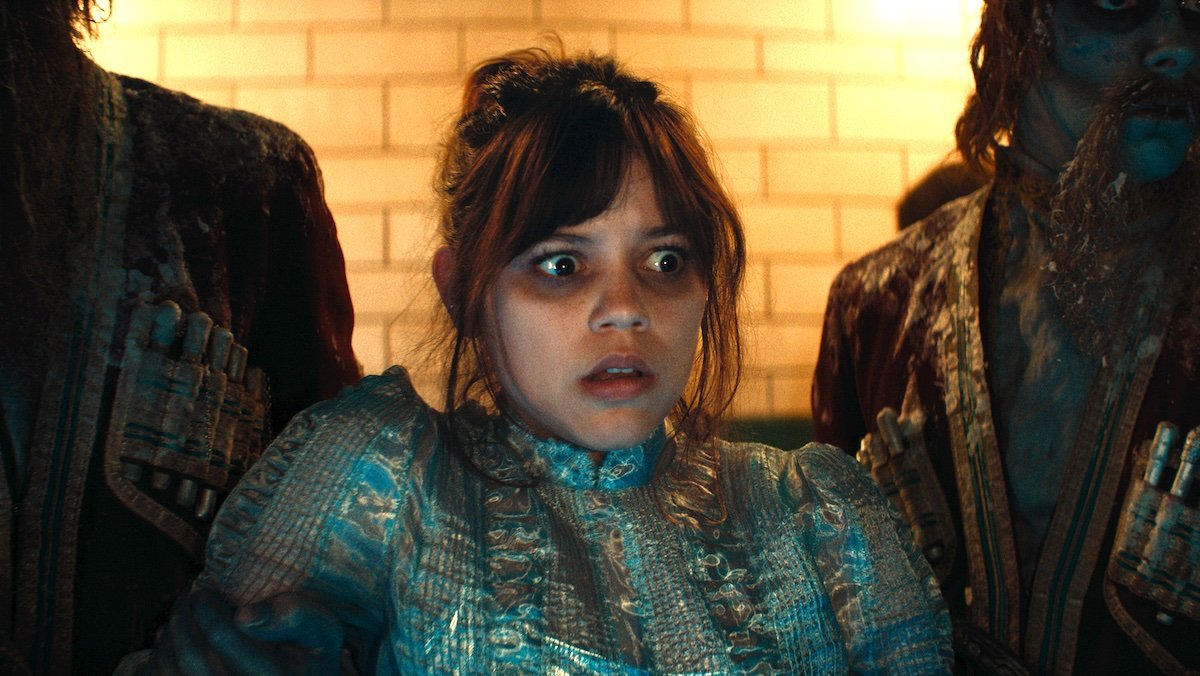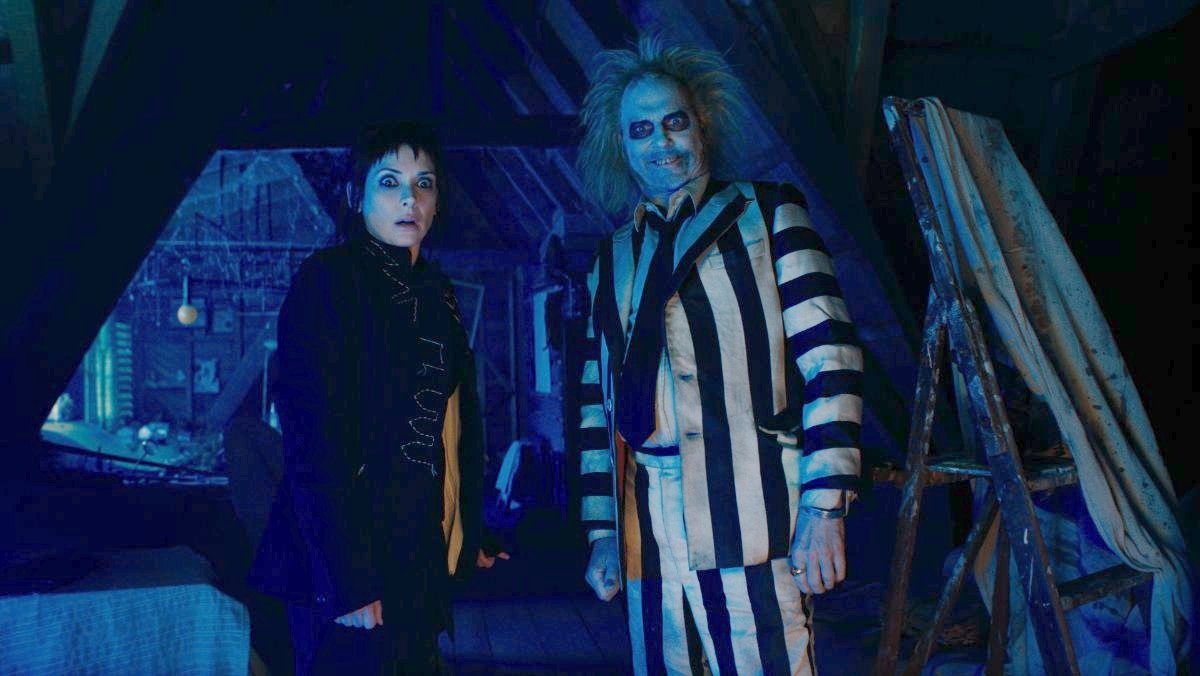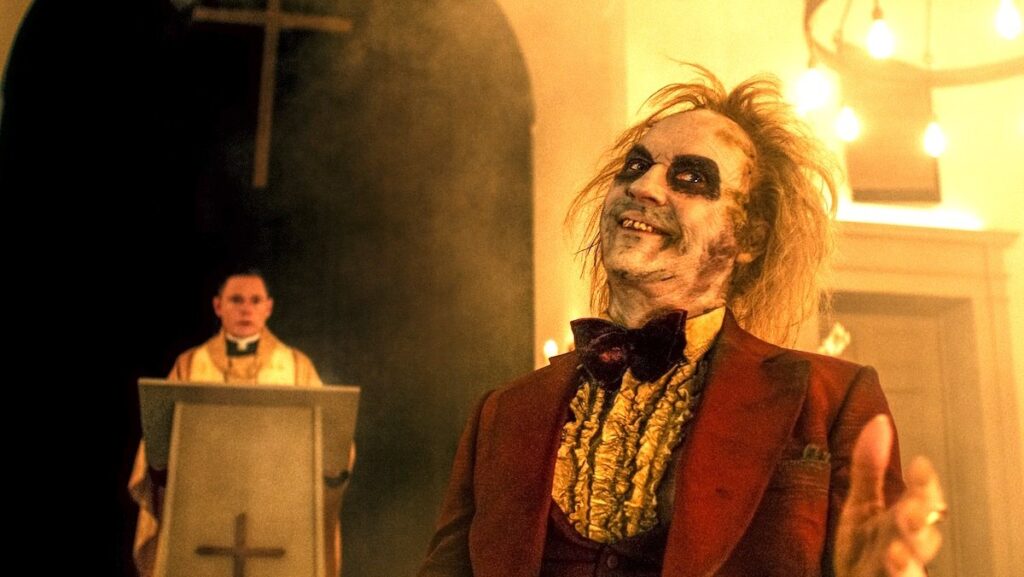Beetlejuice Beetlejuice was a lot more heartfelt than the original film, and for a brief moment it seemed as though Tim Burton’s long-awaited sequel was going to end on an especially sentimental note. Only, Lydia and Astrid’s bonding took a dark twist. The movie’s last scene turned out to be an upsetting dream featuring the Ghost with the Most. What was really going on during that bizarre final sequence? It’s a straightforward question without a straightforward answer, because it depends on whether or not Beetlejuice Beetlejuice is getting a sequel.
Astrid saved her mother by pointing out Beetlejuice violated his wedding contract with Lydia. Having avoided matrimony with him yet again, Lydia then sent the bioexorcist back to the afterlife. And with a sandworm busy digesting Rory, she didn’t have to marry anyone. Yet that didn’t stop us from seeing a Deetz wedding. The film concluded with Lydia ending her TV show, Ghost House, so she could travel the world with her daughter. Astrid had planned to see some of the spookiest places on Earth with her dad before he passed away. Instead she was going to see them with her mom, further strengthening their newfound connection.
Their vacation took them to Dracula’s castle in Romania. There, Astrid eyed a handsome young man whom we then saw her marry in what appeared to be a fast-moving relationship. That was quickly followed by Astrid giving birth inside a very large, slightly unsettling white hospital room with a suspiciously enormous viewing area. From there Lydia watched the painful, unnatural birth of her first grandchild. The child turned out to be the creepy baby Beetlejuice from earlier. (It had popped out of Lydia’s stomach during her “therapy” session with Beetlejuice, the one who conjured the monstrosity.) The sinister newborn crawled the walls before ultimately ending up in his smiling mama’s lap.

Lydia then woke up in bed, revealing it had all been a bad, strange dream. Beetlejuice was not the father to Astrid’s baby. In fact, Astrid had likely never been pregnant at all. (Probably not even married, either, considering how fast that all happened.) Only, Lydia’s nightmare wasn’t actually over just yet. Beetlejuice then woke up next to her and asked if she was okay. A terrified Lydia—who’d lost her dad, stepmom, and fiancee during the film—then woke up for real to an empty bed.
Beetlejuice Beetlejuice‘s final scene went from sweet to scary to sad, but it was consistently weird the whole time. On its own, it doesn’t make a lot of sense. Ending on such a dour note didn’t fit thematically or tonally with the movie, which was far more upbeat and positive. Why show Lydia all alone and being terrorized by her long tormenter when she’d just overcome so much and reconnected with her daughter? The first film was far more sinister and ended with an iconic musical number celebration. This type of ending would make way more sense in that movie, instead.
That final dream sequence only makes sense if it set up a third Beetlejuice film. Except there are currently no plans for a third movie, and it might never happen.

The movie opened with Lydia suddenly seeing Beetlejuice again after decades free from him. He was suddenly haunting her waking hours. When she returned to Winter River for her dad’s funeral Beetlejuice re-entered her life. He’d spent all those years pining after her, and in some ways his love for Lydia made him a better person ghost. He got a real job and seemed to mellow a lot. But that didn’t stop him from coercing Lydia into marrying him when the opportunity arose. Rather than help save Astrid out of the goodness of his dead heart, he exploited Lydia’s vulnerability for his own gain.
Beetlejuice Beetlejuice‘s ending doesn’t work as a conclusion to itself, but it serves as a perfect bridge to a third and final film. It shows Lydia is not free of her spectral foe yet. Loopholes and voided contracts aren’t enough to rid her of him. He still has all eternity to figure out how to get her to say “I do.” If Lydia wants to be truly free of her Beetlejuice nightmare she’ll need to do something more than just send him back to the afterlife. That clearly didn’t work this time anymore than it did the first time. He still wants to marry Lydia and always will.

Ending your film with a scene that doesn’t really fit your movie unless it’s part of a larger story feels like a cop out at worst. But Beetlejuice Beetlejuice can make the case its ending was merely another example of the afterlife being “random,” and that it stayed true to its weird vibes and nature. But it’s hard to not think about the business side of that sequence when we’re watching a big budget Hollywood movie. And that’s almost impossible after seeing the reaction to the film.
Tim Burton’s sequel i s setting box office records. We’d now be shocked if the studio doesn’t make a third and final film with Michael Keaton and Winona Ryder. Warner Bros. (and Burton himself) obviously wanted to leave the possibility open, and without waiting 36 years to do so this time.
None of that should really surprise anyone. After two films we all know if you want to get rid of that iconic bioexorcist you need to say Beetlejuice Beetlejuice Beetlejuice.

